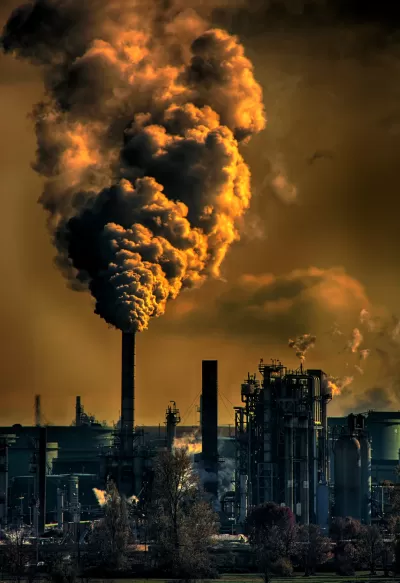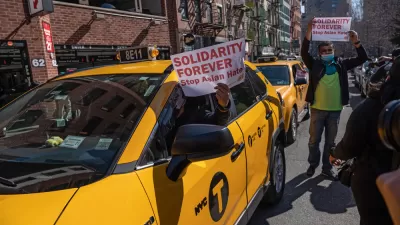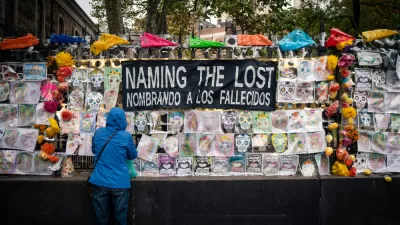Communities exposed to higher levels of air pollution experience higher rates of infection, particularly in areas with high population density.

Shahla Farzan reports on new research from a dozen U.S. cities that reveals that "coronavirus spreads faster in areas with worse air pollution and higher population density," putting communities of color at higher risk for transmission.
"Roughly one-third the size of a red blood cell, microscopic particles known as PM 2.5 penetrate deep into the lungs and cause a wide variety of illnesses. The dust-like pollution also reshapes the cells in our bodies, causing them to produce proteins that act as doorways. That allows the coronavirus to invade the cells," Farzan writes. This means that poor air quality can worsen COVID-19 symptoms, according to Rajan Chakrabarty, a Washington University aerosol scientist. Meanwhile, Farzan notes that "Black people and Latinos across the U.S. are exposed to higher-than- average levels of air pollution from nearly every source, including power plants, construction and agriculture. They are also two to three times as likely to die of COVID-19 than white people." Even when controlling for other factors, air pollution and population density were shown to have the biggest impact on transmission rates.
As we noted early in the pandemic, COVID-19 highlighted the damaging impacts of decades of disenfranchisement and disinvestment on communities of color and low-income households, who now face a growing set of interrelated challenges that include rising housing costs, inadequate infrastructure, and health hazards compounded by the uncertainty of the pandemic.
FULL STORY: Air pollution in St. Louis helps fuel coronavirus spread, especially in communities of color

Planetizen Federal Action Tracker
A weekly monitor of how Trump’s orders and actions are impacting planners and planning in America.

Congressman Proposes Bill to Rename DC Metro “Trump Train”
The Make Autorail Great Again Act would withhold federal funding to the system until the Washington Metropolitan Area Transit Authority (WMATA), rebrands as the Washington Metropolitan Authority for Greater Access (WMAGA).

DARTSpace Platform Streamlines Dallas TOD Application Process
The Dallas transit agency hopes a shorter permitting timeline will boost transit-oriented development around rail stations.

Renters Now Outnumber Homeowners in Over 200 US Suburbs
High housing costs in city centers and the new-found flexibility offered by remote work are pushing more renters to suburban areas.

The Tiny, Adorable $7,000 Car Turning Japan Onto EVs
The single seat Mibot charges from a regular plug as quickly as an iPad, and is about half the price of an average EV.

Supreme Court Ruling in Pipeline Case Guts Federal Environmental Law
The decision limits the scope of a federal law that mandates extensive environmental impact reviews of energy, infrastructure, and transportation projects.
Urban Design for Planners 1: Software Tools
This six-course series explores essential urban design concepts using open source software and equips planners with the tools they need to participate fully in the urban design process.
Planning for Universal Design
Learn the tools for implementing Universal Design in planning regulations.
Municipality of Princeton
Roanoke Valley-Alleghany Regional Commission
City of Mt Shasta
City of Camden Redevelopment Agency
City of Astoria
Transportation Research & Education Center (TREC) at Portland State University
US High Speed Rail Association
City of Camden Redevelopment Agency
Municipality of Princeton (NJ)





























